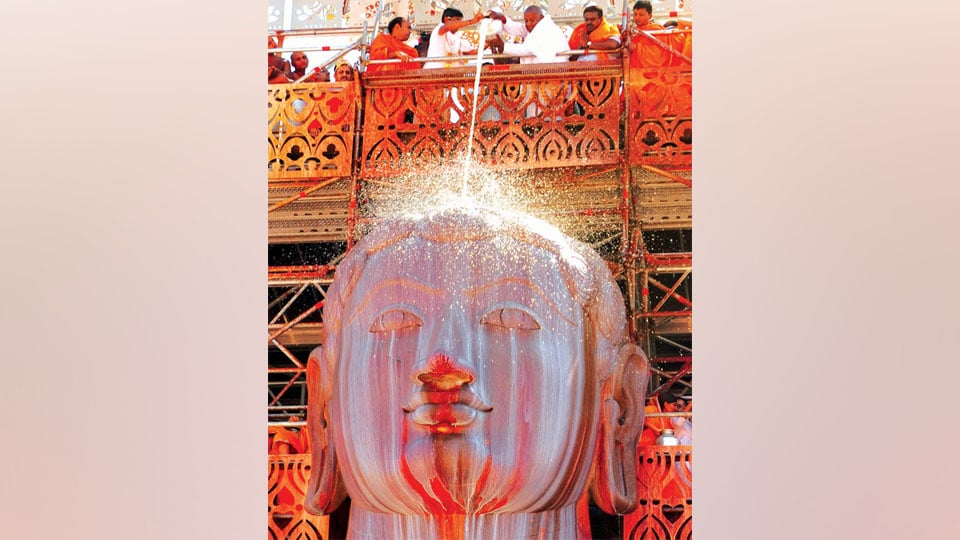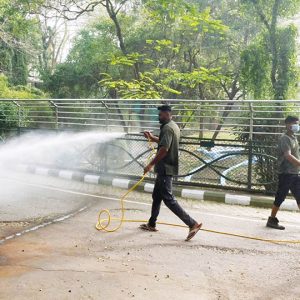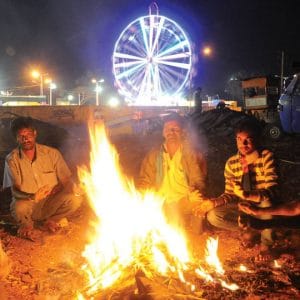Shravanabelagola: Today is the last day of the 88th Mahamastakabhisheka of Lord Bahubali at the Jain pilgrimage centre of Shravanabelagola. Anointing of statue will be conducted on Sundays for the next six months.
The Shravanabelagola Mutt may hold an additional anointing ceremony on Feb. 26 (tomorrow), to facilitate volunteers who have been working in Shravanabelagola for over a month. Hundreds of cadets from Scouts and Guides and members of several Jain volunteer organisations have been camping and helping the proceedings.
The Jain Mutt has announced that once the main anointing ceremony is completed on Feb.25, similar rituals will be held for the next six months but only on Sundays.
As only 5,000 people can witness the anointing atop Vindhyagiri Hill, it is not possible to accommodate more number of visitors.
Hence the Mutt has said that anointing ceremonies will be conducted on Sundays between March and August. Several Jain Organisations across the State and country have approached the Jain Mutt to book rituals that are conducted on Sundays.
“As many people don’t get chance to do anointing in the first eight days of rituals, the anointing ceremonies will be organised on Sundays.
Jain communities will gather to conduct the anointing. A certain amount of money, which will be used to procure the ritual materials, including milk and other items, will be fixed.
Dharmasthala Heggade family will have exclusive anointing rights in March. Hubballi Jain community will anoint the statue in May,” said a senior trustee from the Mutt.
Once the final anointing is over, the Archaeological Survey of India (ASI) team will take up chemical washing of the monolith
WHERE DOES THE FLUIDS GO?: Where does thousands of litres of water, milk, sugarcane juice, tender coconut water and other liquids that are poured on the Gommateshwara Statue go?
“There is a crevice in front of the statue, and liquids flow through it. But nobody knows where the outlet is,” K. Moortheswari, Superintending Archaeologist of Bengaluru Circle said.
“It is difficult to find the outlet. We will form a team of engineers and Archaeological experts to trace the path taken by the water, once the Mahamastakabhisheka is over,” the Officer said.
According to one story attached to this centre of pilgrimage, liquids, especially milk, poured on the statue collects in a pond located right at the bottom of Vindhyagiri. In fact, it is called bili-kola (white pond) for this reason. The name of the place — Belagola — is a variant of this word.
However, right now, there is no clear path to show that liquids flow from the hill to the pond and it does not turn white during the ‘abhisheka’ ceremony.








Recent Comments